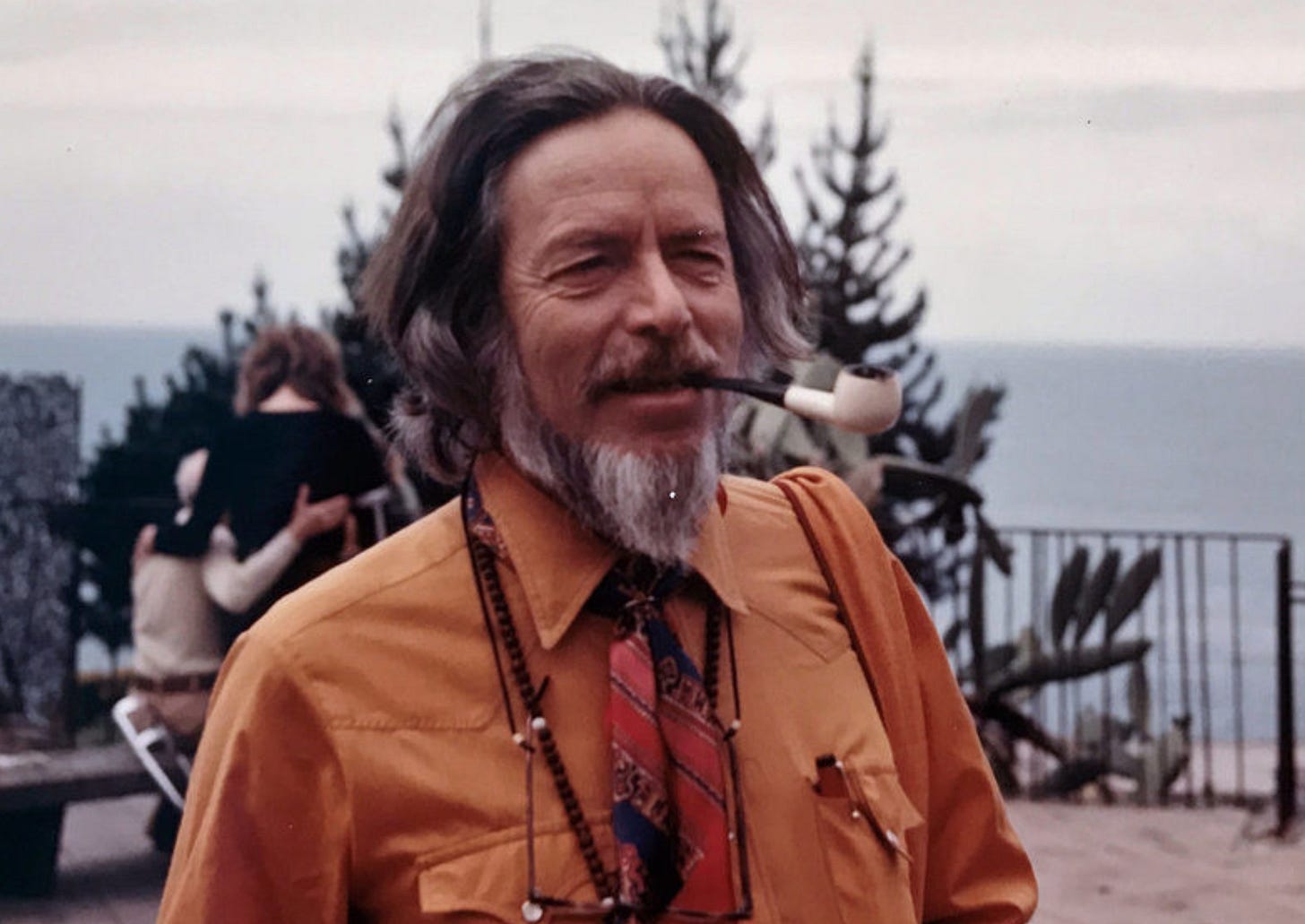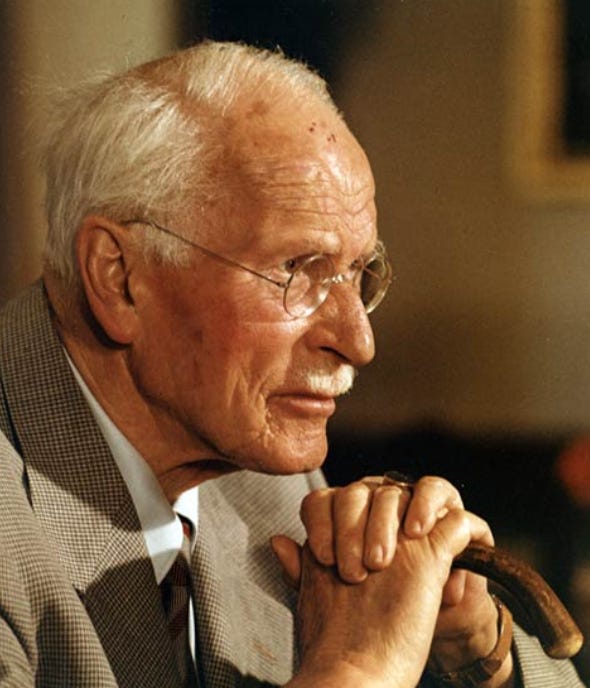Five Elemental Short Takes
A poetic primer for new and seasoned readers of the Tao
It’s been a full month—bracketed by two full moons—since I returned home. These past weeks, I’ve been working to rebuild a life from scratch. In my writing here, I’ve explored grief and the embodied practices that help metabolize loss.
Now that I’m more grounded, I’d like to return to a central thread in my work: the Five Elements of Chinese Medicine, and how they can illuminate our yoga, meditation, and daily life.
For any newcomers, this post offers a felt introduction. For those more seasoned in energy work, I hope this opens a new doorway. What follows are five elemental stories—told through five different voices—that trace how these ancient patterns echo through nature, evolution, psyche, practice, and spirit.
I. The Classic View: The Cycle of Generations
I once asked a soft-spoken Taoist scholar what the Five Elements were really about. He leaned in, almost whispering:
“They’re not things, you know. Not substances. They’re movements. Phases. Transformations. That’s why we call them Five Phases, too— they’re verbs.
The old texts say: Water gives rise to Wood, like spring shoots after rain. Wood fuels Fire, as branches crackle in flame. Fire returns to Earth, ashes falling, nourishing. Earth yields Metal, deep within its mineral womb. And Metal gives birth to Water again, as dew condenses on its cool, silent surface.
That last one—Metal to Water—it confused me too. I questioned the whole thing at first. But over time, I began to feel it. Each Element gives way to the next, like seasons turning. It’s less a theory than a poem. A life cycle. The soul moving through phases: Source. Becoming. Transformation. Integration. Refinement.”
II. Alan Watts and the Promethean Leap
Alan Watts came to me in a waking dream. He was smoking, barefoot, and standing on a damp, celestial boat deck.
“It all begins with Water, my dear chap. Life crawled out of it. That’s why every scientist worth their salt looks for water first when scanning the stars—Water is the mother of life.
From there: Wood. Life sprouts. Plants reach. And then humans did something peculiar—they stole Fire. That Promethean spark! They cooked, they gathered, they told stories by the flame. Fire didn’t just warm soup—it changed consciousness.
With Fire, we learned to digest not just food but experience. That’s Earth—cooked grains, the hearth, the belly that processes life.
And then comes Metal. Tools. Blades. Precision. Intellect. Insight. Like your friend Mañjushrī with his sword of discernment. Of course, the same blade that can slice a fresh apple gave us the guillotine. Metal birthed new responsibilities, new horrors.
For the yogi, Metal refines into quiescence. Through careful attention to breathing, the stillness of samadhi is revealed, returning us afresh to the awakened reflection of Water itself.
The cycle continues. The cosmos breathes. And so do you.
But I’m just a mystic trickster—go ask Jung about the rest. He’ll tell you how these Elements play out in the dreamlife of the soul.”
III. Carl Jung and the Alchemy of Psyche
Jung came as he always does: overcast brow, pipe in hand, heavy with meaning. He didn’t waste time.
“The human psyche, like the cosmos, begins in chaos—Water, undifferentiated and vast. It is the unconscious, the mother matrix. From this, the ego emerges—symbolized by Wood, the upward push of identity, growing toward light but still entangled in instinct.
Then comes Fire, the alchemical stage of disintegration and transformation. In dreams and myth, this is the descent into conflict, passion, and suffering. It is also the emergence of individuality and the flame of new consciousness on the verge of becoming whole.
Earth follows: the integration of experience. The soul builds a container. This is the stage of humility, nourishment, and patient embodiment.
And finally, Metal—symbol of distillation, clarity, and the ‘sublime melancholia’ of realizing impermanence. In the West, we often resist this truth. But in Taoist and Buddhist traditions, to truly see the cycles is to move closer to wholeness.
As above, so below. As within, so without. The Elements are not only in Nature, but in the deep architecture of the soul.”
IV. The Yin Yoga Voice Within
This one came from inside. From the quiet after practice.
“In Yin, you begin with Water. Stillness. Descent. You lie there, limbs heavy, the breath spreading like mist. The nervous system unwinding as the connective tissues yield. It’s the invitation to listen.
Then, Wood. You start to feel the edge. The gentle stress, the tug of fascia adapting. This is how growth happens—through sustained, intelligent tension.
Fire ignites next. Circulation increases. Qi begins to dance. Awareness brightens. The spirit returns. Something internal starts to sing.
Then comes Earth. Stability. Warmth. The feeling of being held. You can digest more—food, emotions, sensation, history.
And finally, Metal. The breath is clear now. Awareness is sharp. Insights arrive—not as effort, but as grace. The pose ends, but something inside has been cohered and refined.
Yin Yoga embodies the Elements. And when you collaborate with them, you’re becoming Nature, self-practicing.”
V. Teresa of Ávila and the Elemental Interior Castle
She arrived like a bell in a stone cloister. Laughing, luminous. Her words rang like poetry disguised as instruction.
“The soul, you see, is a castle. But not of stone—of light and mystery. It has seven mansions, and each one calls for deeper surrender.
At the threshold—Water. The first mansion. You’re washed in restlessness, spiritual longing, and distraction. You sense something greater, but feel far from it. You’re in the mist.
In the second mansion—Wood—you begin to respond. You seek, you strive. You read books, go to confession, begin to pray with consistency. The soul stretches toward the light.
By the third and fourth mansions, you meet Fire. Trials. Inner dryness. Devotion becomes discipline. You’re scorched by longing and illuminated by suffering. The soul learns what love demands.
Then, in the fifth and sixth mansions, Earth. Humility deepens. You serve others. You let go of image and status. Visions may come, but they’re not the goal. The soul becomes simple, fertile, receptive.
Finally, Metal. The seventh mansion. A silence so radiant it needs no form. You rest in God without object. The prayer becomes breath. The self dissolves in joy. A sword of light cuts through illusion.
The Elements? Oh yes, my beloved—they aren’t just in Nature. They’re how the soul learns to burn and bloom.”
Closing
These are just sketches, dear reader: finger-paintings on the great scroll of Taoist medicine, Jungian psychology, somatic yoga, and mystical devotion. But I hope they offer a felt beginning.
The Five Elements are more than metaphors. They’re mirrors that reflect physiology, the psyche, and maybe your path.
Learning to invoke them in practice—gently, directly, reverently—is how I’ll be framing upcoming meditation and Yin Yoga practices.
For Paid Subscribers:
Each week, you’ll receive an embodied meditation and Yin Yoga practice to help you explore your own creative collaboration with these elemental archetypes of being.
Please drop me comment or question:
How do you experience the Five Elements in your life, practice, or healing? Is there an Element you'd like me to explore more deeply?
Share your reflections or questions in the comments—I always love hearing from you.
In cultivation,
Josh
More information, Courses and Trainings at: www.joshsummers.net






brilliant reflections and connections
Great read! Thank you !